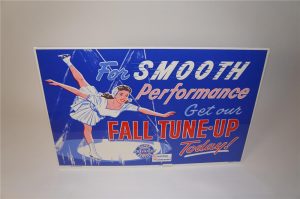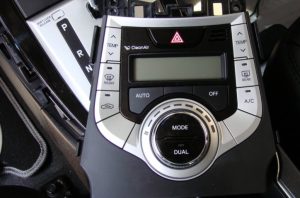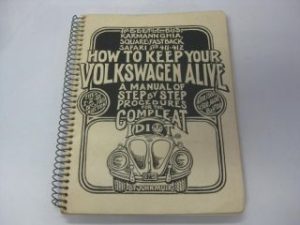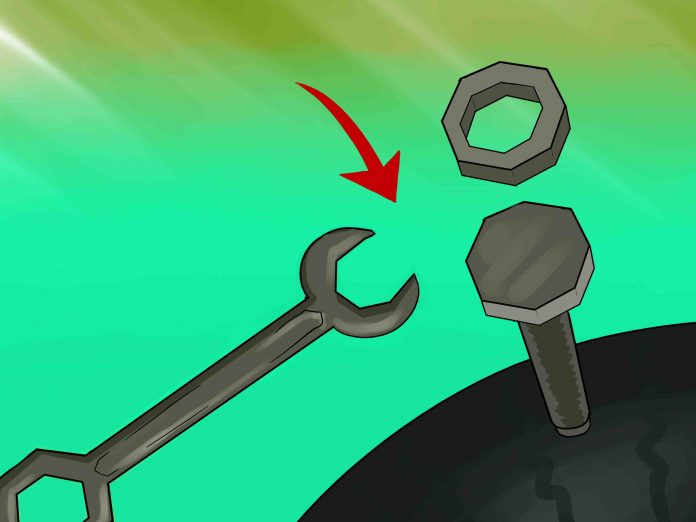Probably the single best thing about modern cars is how long they last and how little trouble they usually give while they last.
Until they break. And then it’s often time to throw them away.
It’s not that they aren’t fixable. Anything can be fixed, if you’re willing to spend whatever it takes to fix it. The trouble is it’s often not worth fixing it the modern car once it’s old. Relative to what it’s worth. And that’s the single worst thing about modern cars (after depreciation).
They are are more fundamentally disposable than the cars of the past. This is a function of their precipitous Fix it to Value Ratio. 
For the first 10-12 years or so from new, most modern cars will only cost you whatever it costs to replace normal wear items such as tires and brake pads and to get basic maintenance such as oil and filter changes done. This is a happy fact given the cost of the new car itself, which is several thousand dollars higher, on average, than an analogous car from the pre-modern (pre-computer) era, which roughly ended in the early 1980s. Those cars needed more frequent basic maintenance; for example, it was usual to have the oil and filter changed once every 3,000 miles or so (vs. once every 5,000-plus on average now) and their non-computer-controlled fuel and ignition systems needed to be “tuned up” twice a year, once in Fall and then again in Spring.
But, these minor services cost less than the less frequent but more expensive service of today.
For example, it is routine for an oil change to cost $50 or even twice that today because many modern cars require high-cost synthetic oil, which lasts longer but also costs.
Same for things like spark plugs, which in some cases cost $10 or more each now vs. $10 for a set back in the day.
But the real cost comes into play when the modern car becomes an old car. When something finally does break, it is often too expensive to fix it – relative to the value of the car. It can be sudden death. The car runs great, seems completely solid. Then one day the electronic climate control stops working. In order to get it working again, a very expensive electronic controller is needed, which is specific to that car and perhaps no longer available because the car’s manufacturer stopped making it. Without that expensive part, the car has no AC or heat.
No defroster, either – as the entire climate control system is controlled electronically.
The car is unusable without working AC/heat/defroster. But the cost of the part – if you find it – plus the labor to install it (because you probably lack the expertise with electronics and the diagnostic tools necessary to perform the work). Let’s say the bill is $1,500 – a sum that isn’t hard to rack up when fixing anything modern.
But the car is only worth $2,500.
It won’t be worth $4,000, either, after you fix it. It’ll be worth the same $2,500 – and in a way, less – because something else expensive that you can’t fix could and probably will go wrong before another year goes by.
You may not even have $1,500 and the only way to pay for the fix is to put it on the card – and pay 26 percent interest. Meanwhile, you could finance a new car. Which is just what many people do, being trapped between the proverbial rock and a hard place.
Pre-modern cars had a more favorable Fix-it-to-Value ratio. They broke down more often, certainly. But when they broke down it cost less – both actually and proportionately – to fix them.
For example you could (and still can) rebuild an old VW Beetle’s air-cooled engine for about $1,500. The entire engine – not just the timing chain or the turbo (which it hasn’t got). You now have a new engine, not just a new turbo on an old engine. If you’re handy, you can rebuild the Beetle’s engine yourself. Removal and reinstallation is within the reach of anyone with a floor jack, a piece of 2×4 and some wrenches. 
And there’s not much else on the Beetle that will break, it being a simple car without complex electronic systems or even a radiator. With a new (rebuilt) engine, it’s effectively a new Beetle and so it’s worth fixing it.
And the engine, itself, could be gimped along for a longer time before it had to be rebuilt. This attribute made it feasible to keep a car like an old VW on the road for 30 years or even longer without spending more than it was worth to keep it on the road.
It’s true you had to deal with frequent fiddling – with any pre-modern car – and sometimes, inconveniently, as by the side of the road in the middle of a downpour on the way to work. But the difference was you could deal with it – literally as well as financially. Cars without computers were much more roadside-fixable and they cost a lot less to fix.
They had their downsides, of course. But there is also a price to be paid for works-great until-it-doesn’t.
And arguably, the biggest downside of all is that we no longer have the choice. We have to accept the calamitous Fix it to Value ratio of the modern car – because we’re not allowed to buy cars that are worth fixing even when they aren’t worth much anymore.
. . .
Got a question about cars, Libertarian politics – or anything else? Click on the “ask Eric” link and send ’em in!
If you like what you’ve found here please consider supporting EPautos.
We depend on you to keep the wheels turning!
Our donate button is here.
If you prefer not to use PayPal, our mailing address is:
EPautos
721 Hummingbird Lane SE
Copper Hill, VA 24079
PS: Get an EPautos magnet or sticker or coaster in return for a $20 or more one-time donation or a $10 or more monthly recurring donation. (Please be sure to tell us you want a magnet or sticker or coaster – and also, provide an address, so we know where to mail the thing!)
If you’d like an ear tag – custom made! – just ask and it will be delivered.
My latest eBook is also available for your favorite price – free! Click here. If that fails, email me at [email protected] and I will send you a copy directly!













As others have commented, 3 months of paying $500-$600 for a major repair on a car that drives vs $500-$600 for 4-5 years on a new car with 10x the electronic parts.
It also does help to own a popular brand or popular collector car that aftermarket or 3rd party parts exist for. The chevy LS line is a good example and has tons of replacement parts because it has a huge market.
“The car is unusable without working AC/heat/defroster.”
Spoken like a man who never actually drove a VW Beetle from 1968.
Clover,
You are speaking to a man who has owned three old VWs from that era, including a ’68 and a ’74 which was my daily driver in the ’90s, when I worked at The Washington Times. I drove it in DC traffic every day, for years. So I am well-acquainted with what is like to “actually drive” an old Beetle.
I wonder whether you can say the same?
If you can’t, then please shut the hell up about things you have no business talking about.
So if you drove an old Beetle in the winter in the mid-atlantic, then you know it was usable, assuming you are man enough to drive in the winter.
Clover,
I don’t often reply in this manner, but in your case . . .
Come visit me sometime and I will show you who is “man enough” to drive an old VW in the winter. Which, by the way, I did for many years. Unlike, I am assuming, you – who spouts off about cars he’s never owned to those who have.
The air cooled VW and the Mercedes mechanical diesels were the epitome of automotive art. Even then, most of my Mercedes have had a bad climate control (they started using a module in the late 70’s) cruise control (analog electronics- ditto) and window switches (placed in the console where they always get pop or coffee spilled in them until they don’t function). But there is no question that they are worth keeping up. The only reason I’ve ever let them go was boredom. Then after a few months with a Caddy, or a convertible Mustang, or something else, the value of a rock simple, reliable, repairable car reasserts itself.
One still might be money ahead fixing instead of replacing. The new replacement you buy is likely to be even MORE electronic dependent, and MORE costly to do major repairs. With the preponderance of turbo/supercharging and transmissions with a ridiculous numbers of gears, breakage is likely to be MORE frequent. Its a thing the watermelons (green on the outside, red on the inside) never dwell on. The fuel cost of building a car. Back in the day, when cars were still largely constructed of steel, a car may take more fuel to build than it would burn in its lifetime. Though the ratio is likely to be far lower now, it is still a factor worthy of consideration. One must include in the cost involved the satisfaction, if it has worth to you, of keeping the thing running.
The two most expensive repairs I had done were both on GM engines. Actually the same V6 that they jammed into everything for a few years.
First one was a Lumina Z34. The casting had a port for a rotor, which was unnecessary because of the somewhat new ignition block. Instead of welding the hole shut, they just slapped a cover with a rubber gasket, which failed at about 115K. I had to add oil every time I got fuel. The fix was to tear down the whole engine and install a new $5 gasket.
Second was the shitbox Pontiac GrandAm GT (which would have been interesting to have a turbo added and an O added to the end of the GT, but that’s in another universe). Again, a gasket, this time the head gasket perished due to problems with Dexcool coolant. Again, another engine teardown and a $50 part. Should have been a recall, but few of the vehicles lasted long enough to be affected.
As for the electronics, the biggest problem with them is that when they get old, they get hard to find. ECMs don’t change often, but because the codes have to match up you might not be able to find a replacement, especially if the failure is common. In many cases some of the components might not be manufactured anymore either. An engineer might source a chip that integrates a lot of functions into one component, which saves a lot of board space, time and effort, but there might only be a few production runs for that chip, especially if it is only used by one manufacturer. And the supplier probably doesn’t want to deal with replacement-level production runs either. So you’re off to the junkyards and eBay to look for a working part, one that probably will have the same failure yours did.
Sadly many things on modern cars cost a MINIMUM of a grand each… Still, I look at getting soaked on a repair vs the new car payments that would add up to much more. The problem with the so-called market values on used cars is that they don’t take into proper consideration the intrinsic value that a functioning vehicle has over a dead one. Perhaps it’s not unlike the TV Dr. House keeping his Dodge Dynasty going, but one of my vehicles is a 2005 stick shift wagon that I’ve sunk way more than the market value in repairs. The body is still largely intact and I know I can’t get a replacement new car that”s anything like it. Call me stupid I guess.
Rich,
There was a motorcycling oriented website (can’t remember it now) that had the same line of thought. The author there said that asking what a vehicle is worth is the wrong question; the RIGHT question is: how much would it cost to REPLACE your vehicle? I kept my old Nissan going past what it was worth, because REPLACING it with a new one would’ve been over $20K vs. the repair.
These days, anyone can buy an inexpensive scan tool. Some are even bidirectional making them even more useful. Although these aren’t what you use to fix a vehicle they do help get you started in most cases. The biggest challenge for the DIY’er is understanding CAN networks which can be challenging since it is often necessary to have a scope. I have three scopes ranging from a $60 single channel to a $200 dual channel on a $100 laptop, to a used 4 channel SnapOn. Another resource, although this isn’t for most owners, is the junkyard. With patience you can usually find replacement parts for most cars and yes, even certain electronics such as modules, displays, electric motors for steering racks, etc. The average car owner isn’t ever going to repair their own car and most likely never give any thought to the Fix it to Value Ratio. Like most, they just drive it to failure and move on. The 1%’ers like us however, can keep ours running better and longer. No payments!!
Gotta keep that hamster wheel spinning. It’d be nice if they had made 60’s vehicles even thicker.
Eric,
My first car was a ’66 Chevy, and I worked on it myself; all the routine stuff, I did myself. With the pre-computer cars, all one needed was a good set of hand tools, a timing light, and a dwell/tach; that’s it! With those tools and equipment, one could do 90%-95% of the car’s maintenance. If something broke, it was cheap to fix. I remember my muffler blowing out, and having the whole exhuast system done for $100 or so. Of course, that was in the early ’80s, so that would cost more in today’s money; that said, it was manageable repair.
Now, with the modern car, one needs a computer to talk to the car’s computer. One needs special tools available only from the OEM. If the exhaust system goes on a modern car, you’re looking at what, a $1k repair bill? You have the cat(s), O2 sensors, and other stuff that my ’66 Chevy didn’t have. Oh, and by the time the exhaust system needs work on a modern car, the fix to value ratio no longer makes sense, so you have to get a NEW car! Ain’t life grand?